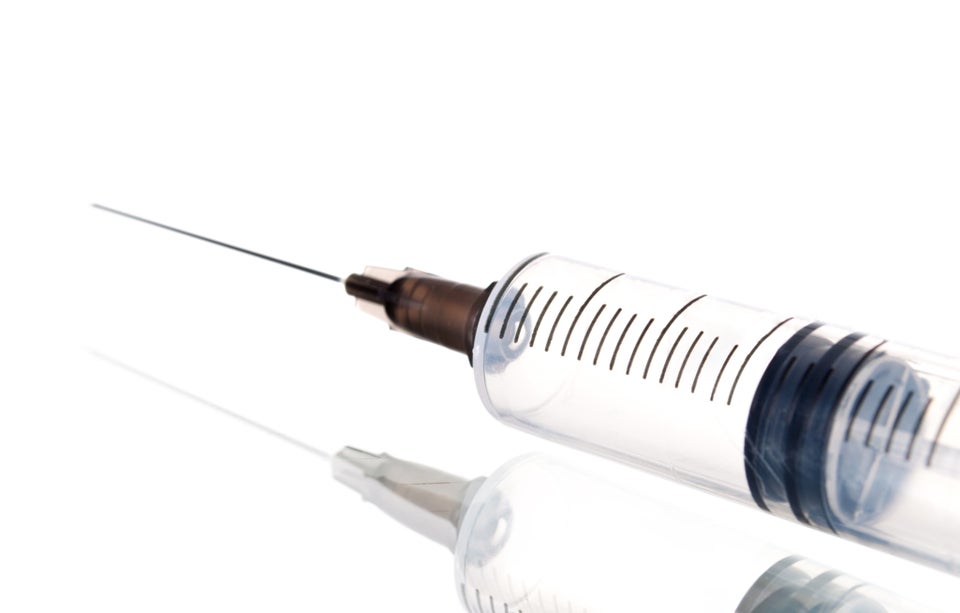
By Erika Check Hayden & Meredith Wadman
The US Federal Bureau of Investigation (FBI) said today that it has arrested a suspect in connection with three letters sent to American politicians that seem to be contaminated with the toxin ricin. The agency confirmed the discovery of a letter addressed to President Barack Obama this morning, one day after the Capitol Police quarantined a letter sent to a Republican senator. A third letter was sent to an unnamed government official in Mississippi.
But the danger posed by such incidents may be relatively small, experts say. Although ricin can be lethal in minute amounts, it is difficult to process raw materials into the toxin’s most dangerous form, a readily inhaled fine powder. That makes ricin unlikely to cause mass casualties, despite the fact that recipes to produce it using castor beans are available on the Internet.
As a result, most attempts to deploy ricin as a bioterror agent — such as the ricin-filled letters delivered in South Carolina and Washington DC in 2003 and 2004 — do not result in deaths, says Raymond Zilinskas, director of chemical and biological weapons nonproliferation at the Monterey Institute of International Studies in California. He believes that the most recent scare will probably not do serious harm because it is unlikely that the ricin detected in the letters to politicians is the lethal powdered form.
“I can’t imagine that ricin in an envelope is going to hurt anybody,” Zilinskas says. “It’s more likely remnants of a paste, intended to scare people.”
But the challenge ricin poses a would-be terrorist has not stopped the US government from worrying, in part because the substance has been found in connection with people linked to suspected terrorist groups such as al Qaeda. The US National Institute for Allergy and Infectious Diseases (NIAID) lists ricin on its second-highest of three tiers of biological agents of concern, making it a lower-priority threat than smallpox or anthrax — but the government is still funding the development of vaccines and potential treatments to protect against ricin exposure.
That work has been slow-going. Ricin works by deactivating human ribosomes — the parts of a cell that make all proteins essential for life — in a way that is difficult for traditional drugs to neutralize. The best drugs work by binding tightly to the destructive part of a toxin, its active site, like a key fitting into a lock. That blocks the toxin’s ability to damage a cell. But ricin’s active site is relatively large and open, and it repels other molecules, so it’s difficult for drugs to find a good fit.
That has prompted some researchers to search for larger protein molecules, called antibodies, that could block ricin’s active site. A group led by Nicholas Mantis of the New York State Department of Health’s Wadsworth Center in Albany has designed antibodies to ricin, engineered plants to make them, and tested them in mice — in which they saved animals treated up to four hours after ricin exposure.
Mantis’s antibodies have been licensed to a biotechnology company for further testing, but he says they won’t be ready for use in emergency situations until they have been tested in humans, which will take at least two years. Ultimately, antibodies may be most powerful in combinations that target different parts of the ricin Mantis says.
Yet because ricin acts so quickly on its victims, some researchers believe vaccines are a better bet to protect against its effects. At least two ricin vaccines are now in the works, but their future prospects are uncertain.
The US Army Medical Research Institute of Infectious Diseases in Fort Detrick, Maryland, has developed a vaccine that protected mice that were exposed to inhaled ricin. It has been tested in people and in human volunteers, who subsequently developed antibodies to ricin. But it is not clear whether the Department of Defense will continue to fund the vaccine’s development which would require further human testing.
The other leading vaccine candidate, RiVax, is made by Soligenix, based in Princeton, New Jersey. Batches of the vaccine produced by immunologist Ellen Vitetta at the University of Texas Southwestern Medical Center in Dallas, who initially developed it, have been tested in animals. Those batches have also been found to be safe in healthy human volunteers, in whom the vaccine stimulated the production of antibodies to ricin.
But Soligenix has not yet tested the safety and effectiveness of its own lots of vaccine. The company’s development efforts have slowed due to budget constraints at the NIAID, Vitetta says.
“It basically is not going anywhere,” Vitetta says. “It’s disappointing and upsetting. When an event like this happens, everyone wants to know where the vaccines are. Somebody has to think this work is important enough to fund us and let us finish it.”
Soligenix’s work on the vaccine is currently funded by a $9.4-million NIAID grant, but further testing in animals to prove the treatment’s effectiveness would cost between $20 million and $40 million, says Chris Schaber, the company’s president.
The nation’s budget woes have also threatened the US bioterror response by forcing cuts at the Strategic National Stockpile, a medical repository that buys and stores such countermeasures, and tightening budgets at agencies such as the NIAID that fund research in the field.
That is a far cry from the years immediately after the 2001 World Trade Center and anthrax attack, when the development of bioterror drugs became a priority for the US government. But Schaber hopes that the ricin detected over the past two days will trigger renewed interest in funding biodefence work — at least for his and Vitetta’s vaccine.
“You never want to see these unfortunate incidents, but the hope is that this puts a spotlight on our vaccine and the need to move it forward,” Schaber says.
In the meantime, the FBI's investigation into the letters addressed to Obama, Mississippi senator Roger Wicker and an unnamed Mississippi justice official continues. FBI special agents arrested a suspect in the mailings, Paul Kevin Curtis, today at his home in Corinth, Mississippi, the Justice Department said.
Preliminary tests have identified granular substances enclosed in all three letters as ricin, although the FBI said today that such tests can be wrong. “Only a full analysis performed at an accredited laboratory can determine the presence of a biological agent such as ricin,” the agency said in a statement. “Those tests are currently being conducted and generally take 24 to 28 hours.”
At least two of the letters were postmarked in Memphis, Tennessee, according to an FBI intelligence memo obtained by the Associated Press (AP). Both missives each contained the phrase, “To see wrong and not expose it, is to become a silent partner to its continuance,” and both were signed, “I am KC and I approve this message,” the AP reported.
Still unknown is whether more letters containing ricin have been sent, and to whom. Congressional offices in Michigan and Arizona also reported suspicious letters on Wednesday and turned them over to authorities, and Capitol Police combed two Senate office buildings after receiving reports of suspicious packages there.
